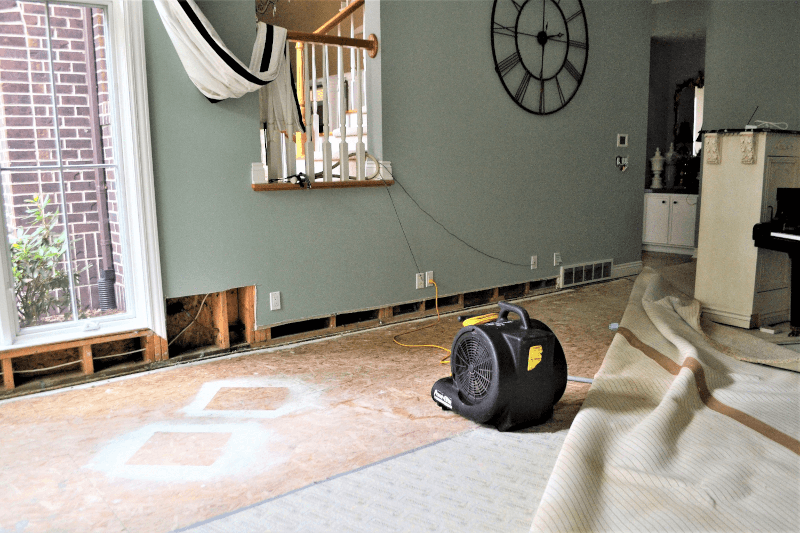
CAUSE OF MOLD IN HOMES
Mold growth in homes is often caused by high humidity levels and moisture. Moisture can accumulate in homes due to a variety of reasons, including leaks in roofs, walls, or plumbing, condensation on windows, and high levels of humidity in bathrooms, kitchens, or basements. Flooding and water damage can also lead to mold growth if the affected areas are not properly dried and cleaned.
Poor ventilation in homes can also contribute to mold growth. When there is inadequate ventilation, moisture can accumulate and lead to mold growth in areas such as bathrooms, kitchens, and laundry rooms. Mold can also grow in poorly ventilated attics, crawl spaces, and basements.
Other factors that can contribute to mold growth in homes include:
- Poor insulation
- Lack of sunlight
- Cluttered living spaces
- Improperly installed HVAC systems
- Air conditioning systems that are not properly maintained
Health Effects of Mold Exposure
It’s important to identify and address the underlying causes of mold growth in homes to prevent it from recurring. Homeowners should regularly inspect their homes for signs of moisture and humidity and take steps to address any issues they find promptly.
Exposure to mold can have a range of health effects, especially for individuals with pre-existing health conditions or weakened immune systems. Some common health effects of mold exposure include:
- Respiratory problems: Exposure to mold can cause respiratory problems, including wheezing, coughing, and shortness of breath. Individuals with asthma or allergies may experience more severe symptoms.
- Allergic reactions: Exposure to mold can cause allergic reactions in some people, including sneezing, runny nose, red eyes, and skin rash.
- Irritation of the eyes, nose, and throat: Exposure to mold can irritate the eyes, nose, and throat, causing discomfort and inflammation.
- Headaches: Exposure to mold can cause headaches, especially in individuals who are sensitive to mold.
- Fungal infections: In some cases, exposure to mold can lead to fungal infections, especially in individuals with weakened immune systems. These infections can be serious and even life-threatening.
- Toxic mold syndrome: Exposure to certain types of mold, such as Stachybotrys chartarum, can lead to toxic mold syndrome, which can cause a range of symptoms, including fatigue, headache, respiratory problems, and memory loss.
It’s important to address any mold growth in homes promptly to prevent exposure to mold and reduce the risk of health effects. Individuals who experience symptoms of mold exposure should consult with their healthcare provider.
Preventing Mold in Homes
Preventing mold growth in homes involves controlling moisture and humidity levels. Here are some tips to prevent mold growth in homes:
- Address any leaks: Inspect your home regularly for leaks in roofs, walls, or plumbing and address any issues promptly.
- Control humidity levels: Keep humidity levels in your home below 60% by using dehumidifiers and air conditioners.
- Increase ventilation: Use exhaust fans in bathrooms and kitchens to remove excess moisture and ensure proper ventilation in attics, crawl spaces, and basements.
- Properly maintain HVAC systems: Change air filters regularly and have your HVAC system inspected and serviced by a professional.
- Use mold-resistant products: Use mold-resistant drywall and paint in areas that are prone to moisture and humidity, such as bathrooms and kitchens.
- Keep your home clean and dry: Clean and dry any areas that become damp or wet, such as carpets and upholstery, as soon as possible.
- Declutter living spaces: Keep living spaces clutter-free to promote air flow and prevent mold growth.
By following these tips, homeowners can prevent mold growth in their homes and ensure a healthy living environment. If you suspect mold growth in your home, it’s important to address it promptly to prevent exposure to mold and reduce the risk of health effects.
Controlling Moisture
Controlling moisture is one of the most important steps in preventing mold growth in homes. Here are some tips to control moisture in your home:
- Fix leaks promptly: Inspect your home regularly for leaks in roofs, walls, or plumbing, and address any issues promptly to prevent moisture from accumulating.
- Use exhaust fans: Use exhaust fans in bathrooms and kitchens to remove excess moisture and ensure proper ventilation.
- Properly vent appliances: Make sure that appliances that produce moisture, such as clothes dryers, are properly vented to the outside.
- Use dehumidifiers: Use a dehumidifier in areas that are prone to high humidity, such as basements and crawl spaces, to keep humidity levels below 60%.
- Don’t overwater plants: Overwatering plants can increase moisture levels in your home, so be careful not to overwater them.
- Use air conditioning: Use air conditioning to reduce humidity levels in your home during the summer months.
- Use mold-resistant products: Use mold-resistant drywall and paint in areas that are prone to moisture and humidity, such as bathrooms and kitchens.
By controlling moisture levels in your home, you can prevent mold growth and ensure a healthy living environment. It’s important to address any issues with moisture promptly to prevent mold growth and reduce the risk of health effects.
